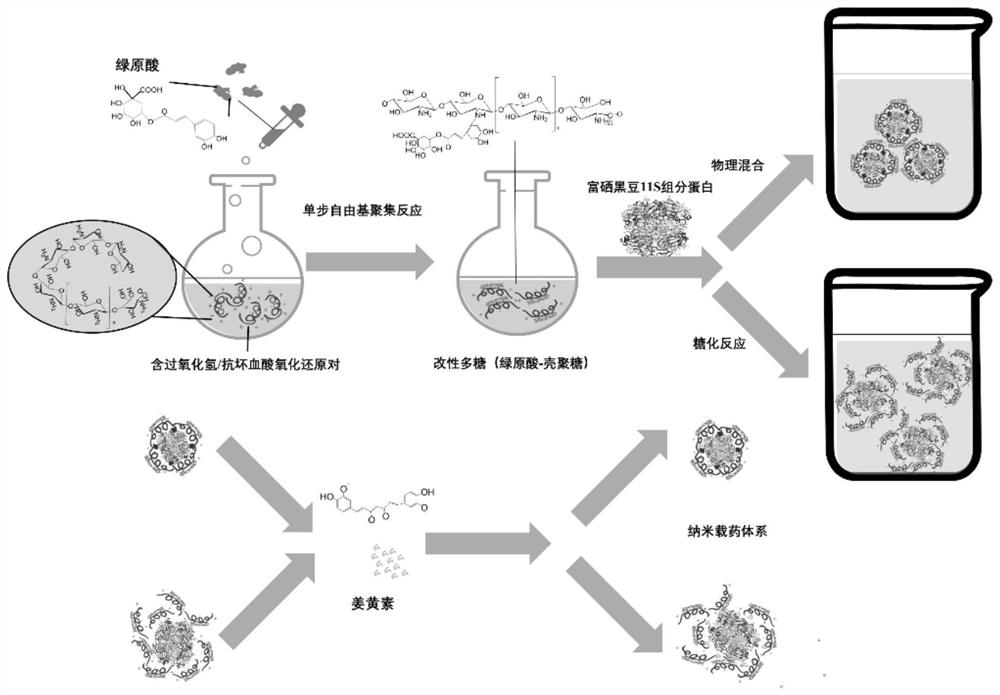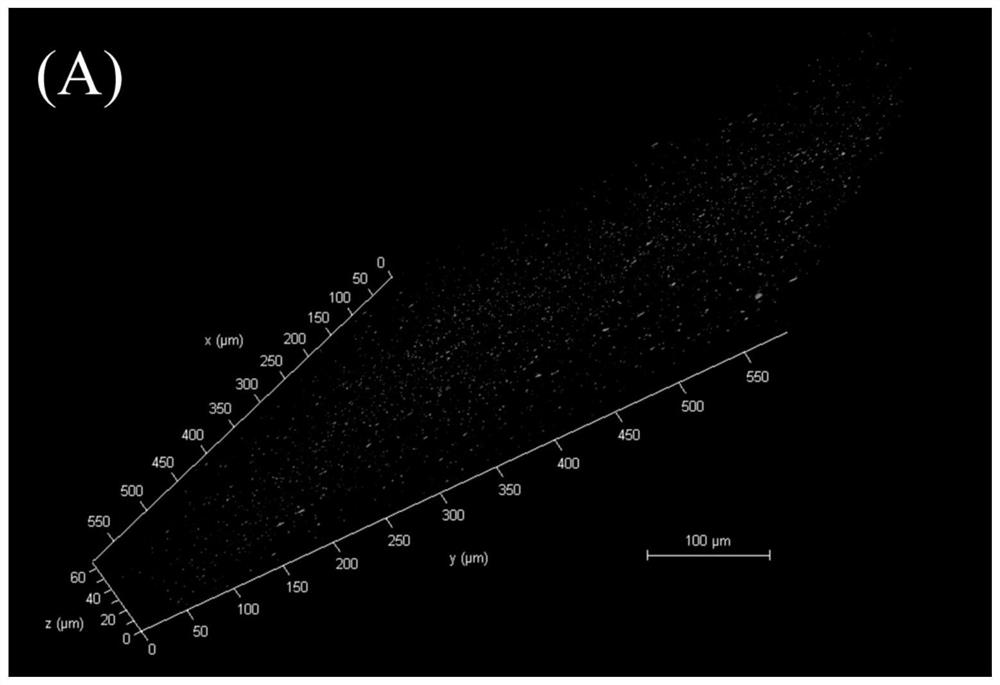PH response slow release selenium-containing protein composite nanoparticles and preparation and application
A composite nanoparticle and selenoprotein technology, which is applied in the field of selenoprotein-containing composite nanoparticles and the preparation thereof, can solve the problems of less comprehensive utilization, and achieve the effects of improving the degree of deep processing and utilization, reducing the cost of products, and improving the insoluble properties of drugs
- Summary
- Abstract
- Description
- Claims
- Application Information
AI Technical Summary
Problems solved by technology
Method used
Image
Examples
Embodiment 1
[0046] The preparation of a pH-responsive slow-release selenoprotein composite nanoparticle comprises the following steps:
[0047] A. Pre-treat fresh selenium-enriched black soybeans and extract 11S selenium-enriched black soybean protein:
[0048] Soak fresh selenium-enriched black soybeans, pulverize them at a low temperature of 4°C, mix the powder with water, defat, and air-dry to obtain selenium-enriched black soybean defatted powder; at a solid-liquid ratio of 1:15, use 0.01 of pH 6.4 under the mechanism of alkali extraction and acid precipitation 11S protein was extracted with mol / L sodium sulfite, desalted by dialysis, and freeze-dried to obtain selenium-enriched black soybean 11S protein powder.
[0049] B. Chlorogenic acid radical grafting chitosan modification:
[0050] Dissolve chitosan in 2% acetic acid solution at a ratio of 1:20 to prepare 5% chitosan solution; mix chitosan:hydrogen peroxide:ascorbic acid mass ratio of 250:17:27, stir for 30min, and follow The...
Embodiment 2
[0059] The preparation of a pH-responsive slow-release selenoprotein composite nanoparticle comprises the following steps:
[0060] A, the extraction of selenium-enriched black soybean 11S protein powder is the same as in Example 1.
[0061] B, the preparation of chlorogenic acid grafted chitosan is the same as that in Example 1.
[0062] C. Compounding the selenium-enriched black soybean 11S protein of step A with the chlorogenic acid-grafted chitosan of step B to prepare a nanocomposite carrier: 6 mg / mL of selenium-enriched black soybean 11S protein solution and the modified polysaccharide in step B by mass The ratio of 3:1-1:3 is mixed (protein: polysaccharide), the pH is 3.5, and the composite nanoparticles are prepared by physical mixing. The particle size and potential of composite nanoparticles prepared with different proteoglycan ratios are shown in Table 2.
[0063] D. Dissolve curcumin in ethanol and mix with the carrier of step C, stir in the dark, disperse the so...
Embodiment 3
[0069] The preparation of a pH-responsive slow-release selenoprotein composite nanoparticle comprises the following steps:
[0070] A, the extraction of selenium-enriched black soybean 11S protein powder is the same as in Example 1.
[0071] B, the preparation of chlorogenic acid grafted chitosan is the same as that in Example 1.
[0072] C. Compounding the selenium-enriched black soybean 11S protein in step A with the chlorogenic acid-grafted chitosan in step B to prepare a nanocomposite carrier: 6 mg / mL selenium-enriched black soybean 11S protein solution and the modified polysaccharide or shell in step B Polysaccharides were mixed at a mass ratio of 3:1 (protein: polysaccharides), pH was 3.5, and composite nanoparticles were prepared by physical mixing or saccharification reaction and heating at 90°C for 30 minutes. The particle size and potential of composite nanoparticles prepared by different polysaccharides and composite methods are shown in Table 3.
[0073] D. Disso...
PUM
 Login to View More
Login to View More Abstract
Description
Claims
Application Information
 Login to View More
Login to View More - R&D
- Intellectual Property
- Life Sciences
- Materials
- Tech Scout
- Unparalleled Data Quality
- Higher Quality Content
- 60% Fewer Hallucinations
Browse by: Latest US Patents, China's latest patents, Technical Efficacy Thesaurus, Application Domain, Technology Topic, Popular Technical Reports.
© 2025 PatSnap. All rights reserved.Legal|Privacy policy|Modern Slavery Act Transparency Statement|Sitemap|About US| Contact US: help@patsnap.com



